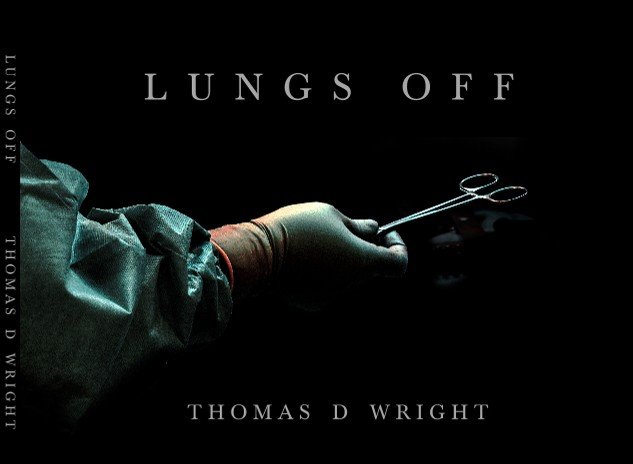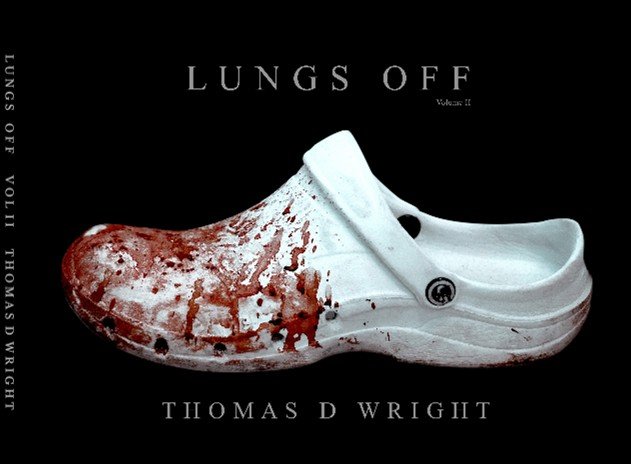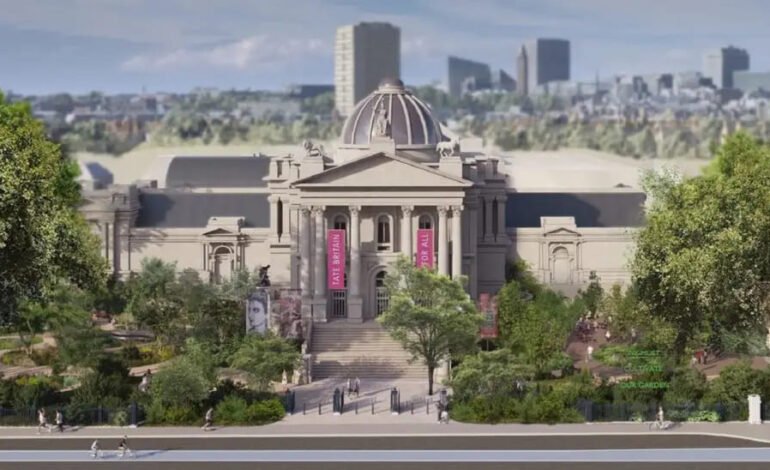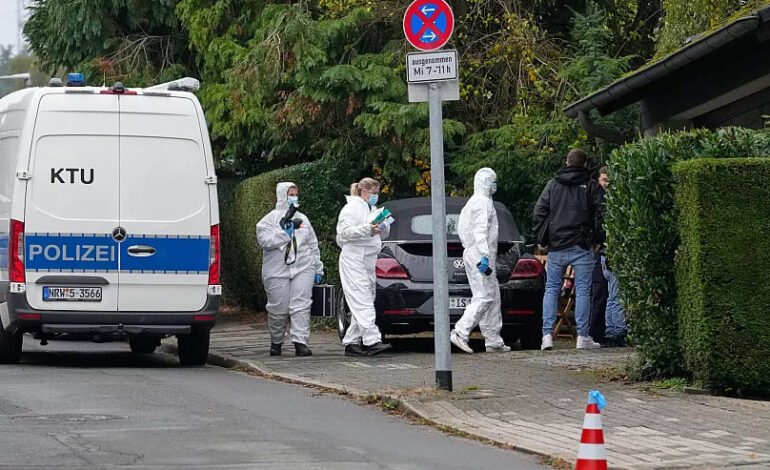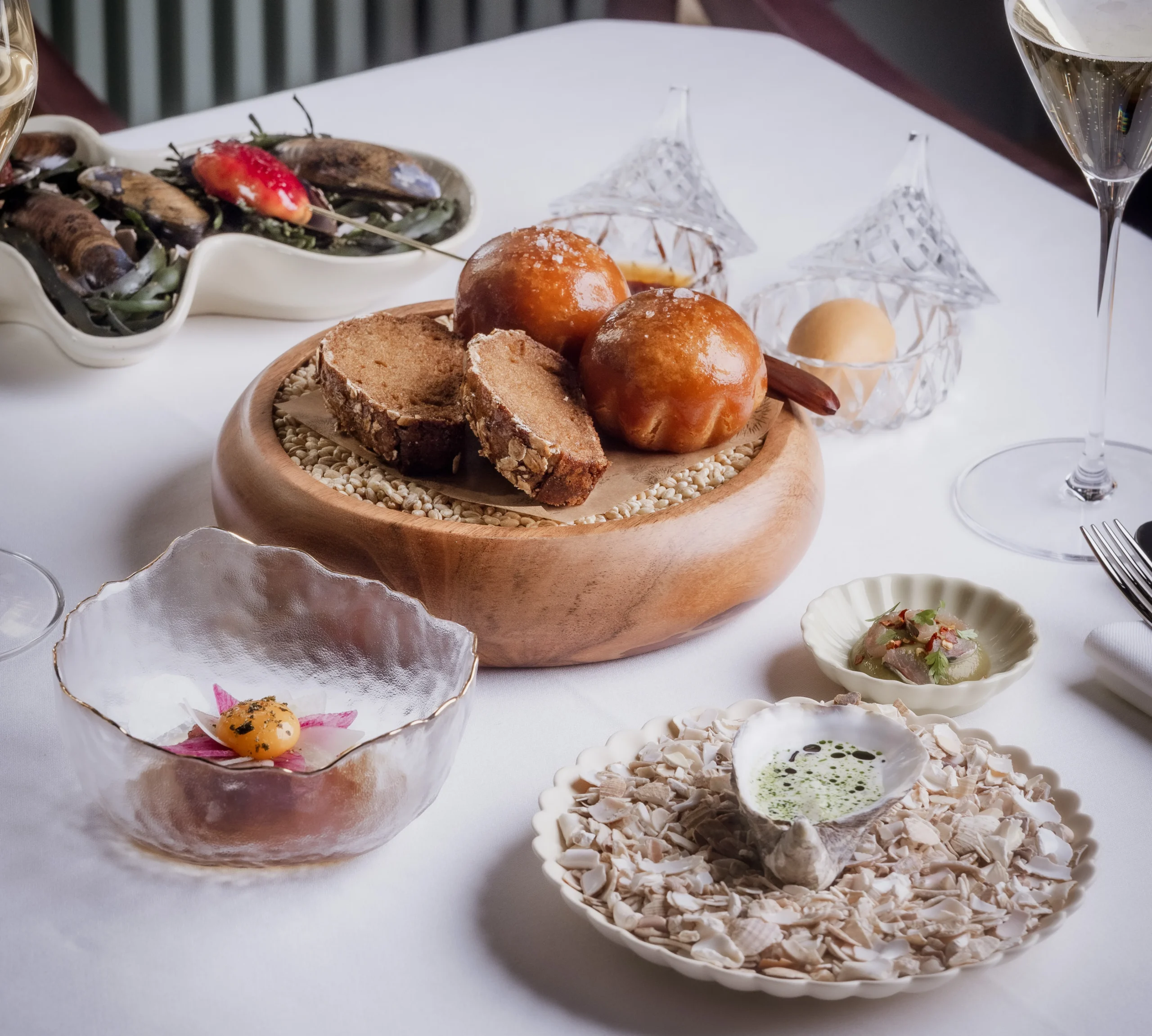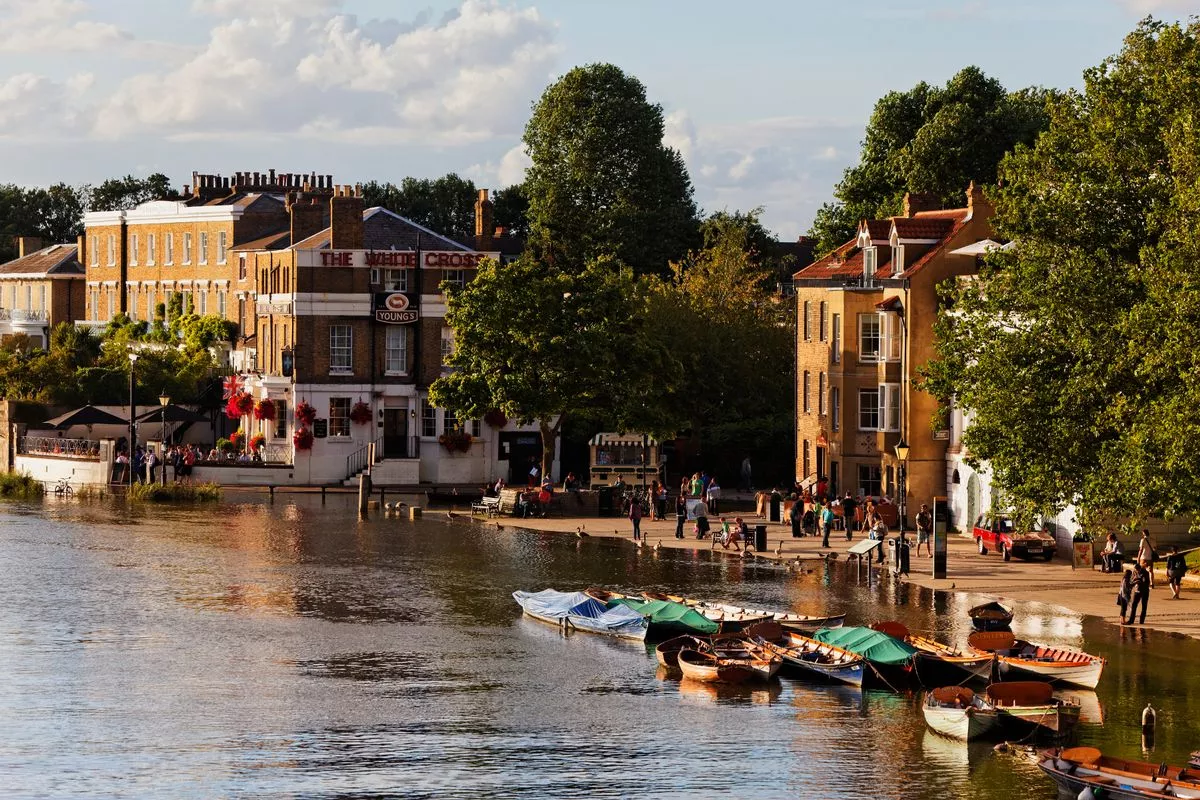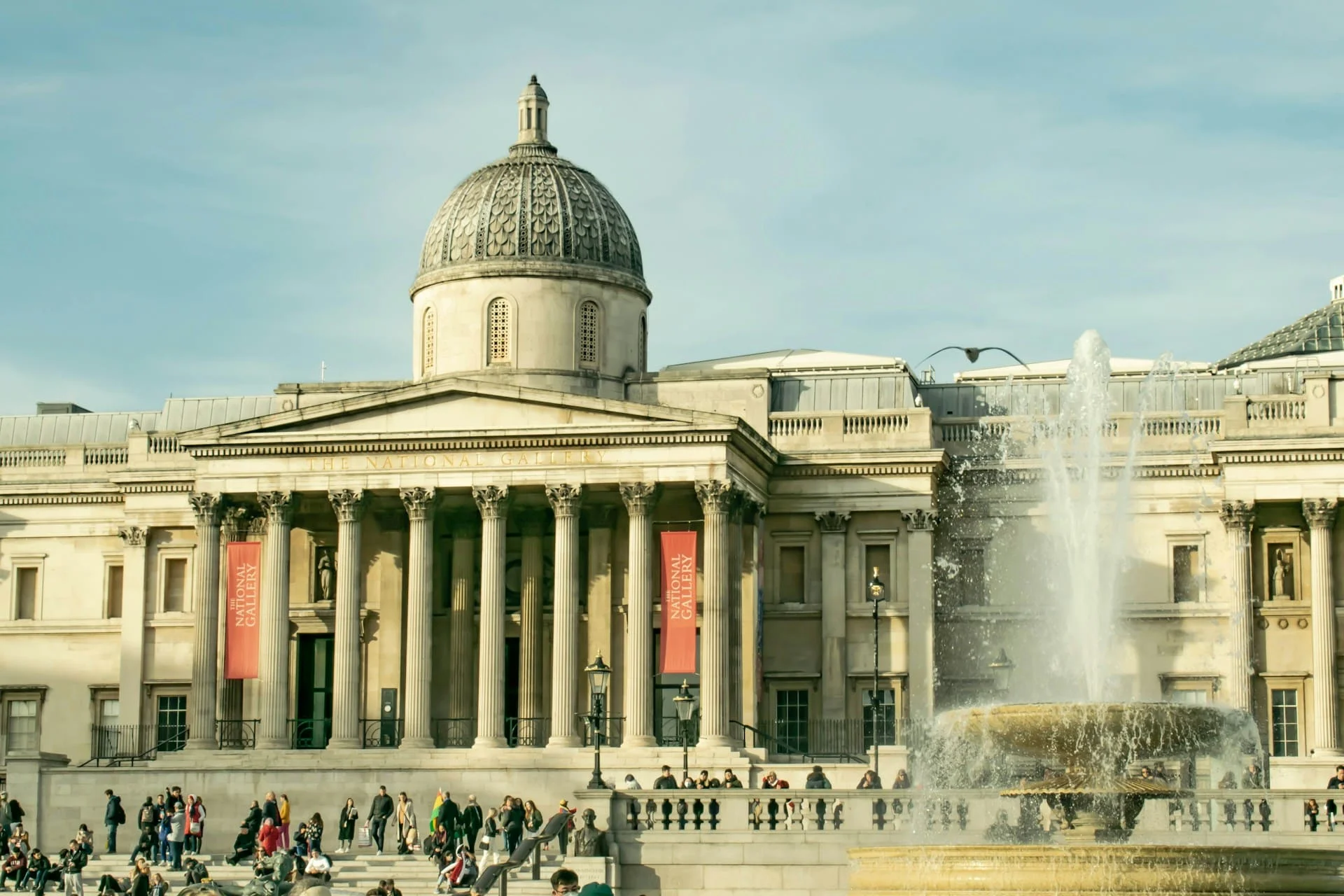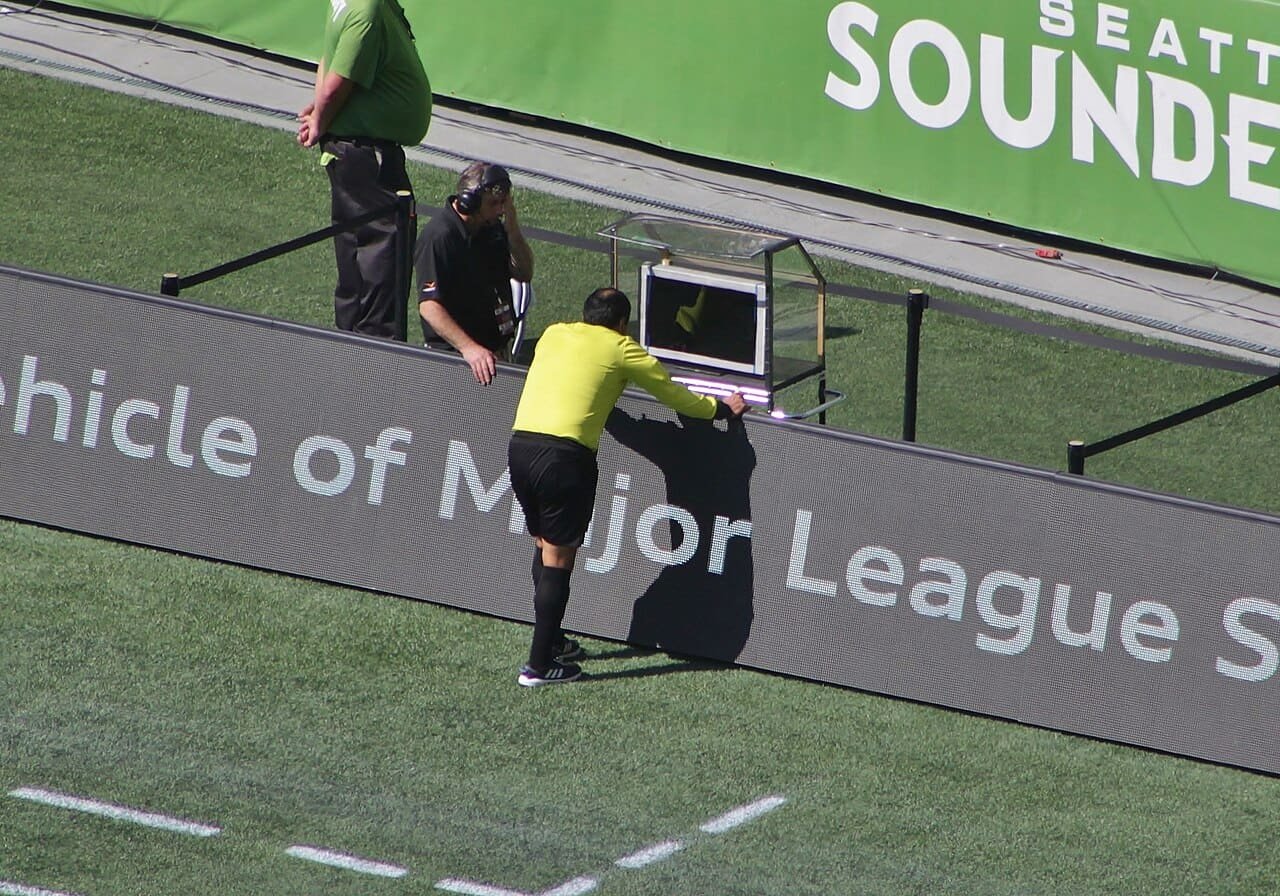A Corporeal God: Thomas D Wright and the Theatre of the Heart
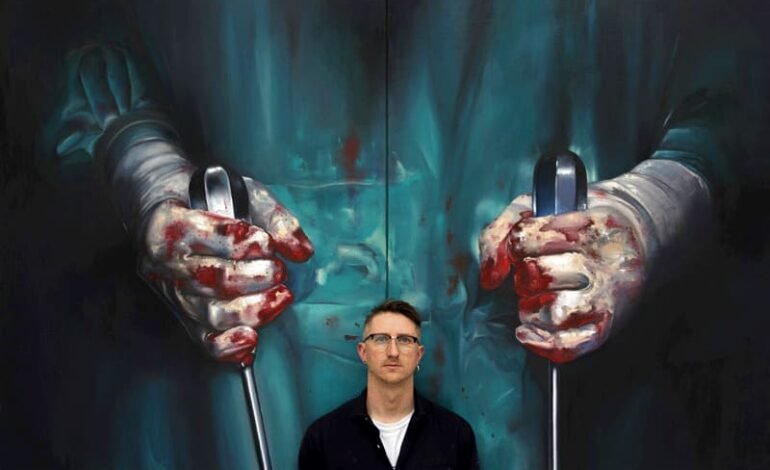
Back in May, a sharp looking Thomas D Wright in a dapper suit, very skinny tie and the biggest red laces, walked into the Chelsea Arts Club to chat with Ripley whose show “Royal Horses & Guards Over London” hung on the walls.
The next day I found a flyer stuffed in my pocket…
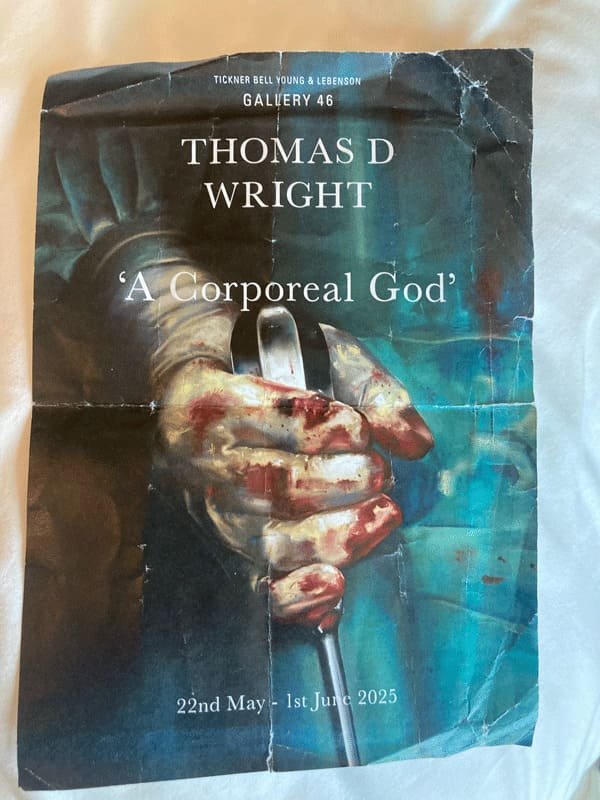
It was an image of a surgeon’s hand in the midst of his life’s work. This is a depiction of a hand that could give back the life to the poor soul under it. It struck me it was as if it was the hand of god – I was hooked!
Kandace Blanchard and I hung out with Thomas on and off for a week while in London and found him to be such a dichotomy that Lucky decided to follow him for a while, His work has taken on such a development over the last six months, it has been well worth the effort and the wait.
Walking through Whitechapel and into the low Georgian East End building that was (synchronicity?) last used as a Nursing facility by London Hospital, you are immediately confronted by Thomas D Wright’s extraordinary photographs and paintings of surgical operations.
“This is heart surgery. It’s presented in such way that is more cinematic and artistic than documentary. I’m trying to give more of a qualitative response than a quantitative one, so it’s about representing a sense of awe and emotion that I’m getting.”
“During my masters degree at RCA, this work represents a personal breakthrough in technique and approach.”
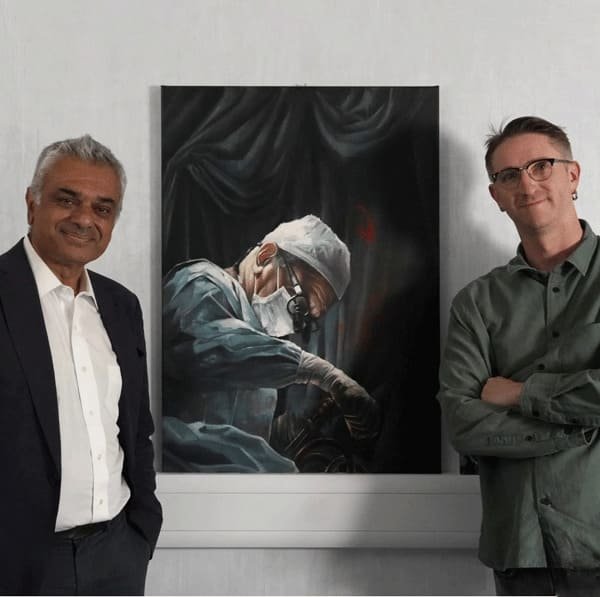
“The work I did to get these images was all so fascinating, thanks to Dr. Giampaolo Martinelli, consultant cardiothoracic anesthesiologist at St Bartholomew’s Hospital, I was privileged enough to witness and capture images from a heart bypass surgery. Presented through my contemporary baroque vision.”
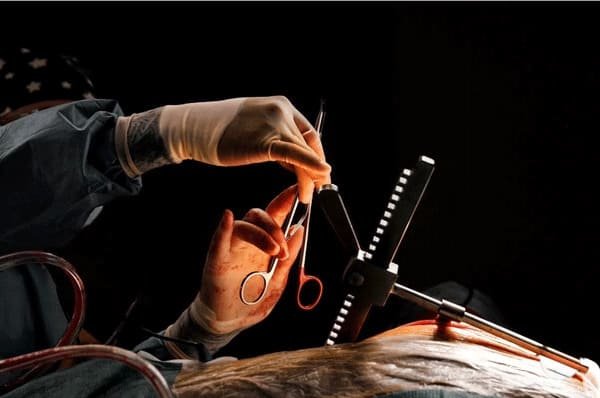
Thomas D Wright stood in the theatre with the surgeons and photographed the act. They accept he is there, and he takes his time so as not be noticed, the drama unfolds in his camera, and he shares that with us. There is a sort of lyrical rhythm that takes place as he zooms in on the passion play of the surgeons.
“You’re aware of my fascination with Baroque religious painting. There’s many links between the surgical imagery and the Baroque paintings, I find these elements of hope and faith fascinating. Who will be your savior when you’re on that table?
But then also there’s brutality in a lot of the scenes in these paintings. Like the crucifixion scenes or the martyrdom of the saints, any of these are really quite extreme, bloody and horrific scenes, though we find beauty, serenity and salvation in the images of suffering and pain. How bizarre. There’s a hunger for it in our DNA, I suspect. I’m drawing these comparisons with the surgical imagery and the essence of Baroque paintings.
It’s when the painting stops you in your tracks and makes you consider only that piece. It is these things that take you out of your current bubble and make you feel alive. I need the image to arrest my attention and demand consider its intentions. The lights, the drama, the passion, the energy. I need that fire in my art. It’s the art that stokes my fire.”
Even as a young lad of maybe 12, he had a fascination for Victorian medical books and their etchings.
“My mum told me I was drawing since I could hold a pencil (you’d think I’d be better at it by now.) Victorian medical oddities, Da Vinci anatomy studies, all these types of things were always fascinating when I was growing up, it’s always been just a complete draw to me.
Arts & Culture — Latest from EyeOnLondon
Explore London’s galleries, major exhibitions and features — then keep reading for more context and updates.
Hogarth murals at St Bartholomew’s Hospital reopen
The restored North Wing and Hogarth Stair welcome visitors to see The Pool of Bethesda and The Good Samaritan up close.
Read the featureMore Arts & Culture
EyeOnLondon — Latest stories
Catch up with today’s reporting, reviews and guides from across the capital’s culture, food and city life.
Browse the homepageExplore Arts & Culture
MoMA’s 2026 Duchamp retrospective announced
A landmark show brings together The Large Glass and Étant donnés — and why it matters for London viewers.
Read the analysisMore Arts & Culture
To understand how we work and to what’s under the skin is highly intriguing. It also makes me meditate on the fact that once we peel off the wrapper, by and large, we’re all pretty much the same. It’s only a series of electrical impulses bouncing around our brains in different ways that separate us.”
Later, leading a multimedia lifestyle as DJ, illustrator and tattoo artist in the Manchester underground arts scene, and surrounded by the addictions that go with it.
“It was the early 2000s in Manchester, every day was a festival… I was still working but rent was cheap, going out was cheap and drugs were cheap, but the thing was, that it was all completely normalised, everyone was at it”
As a DJ & creating electro sounds, “I was playing at clubs, festivals and raves… What grips me about making music is that I’m able to raise and lower excitement, change moods and create atmosphere through sound… total escapism.”
Wright was also a successful tattoo artist “After many years in the scene I made the decision to sort out my scattered life. I went to do a year’s working visa in Australia, when I returned I had lost my job at the tattoo studio, granted I was away 6 months longer than I said I would be so fair enough, though this cut of any ties gave me the chance to pursue my true calling as a painter. I moved to London, which is an epicenter for the artist. I studied. And through the uni I got the support I needed to leave a hedonistic lifestyle in the past and reinvent myself.”
It was a life decision to give it all up and go to art college.
He gained a 1st class hons BA- Illustration and Visual Media, LCC, University of the Arts London and this brought him to The Royal College of Art graduating in 2023.
It gave him the time and experience to become fearless with paint, colour and composition which he brings to this new incarnation of himself, painting with passion.
He is always experimenting with technique and mediums. Wright gets up at 5am every morning to get to his studio to paint.
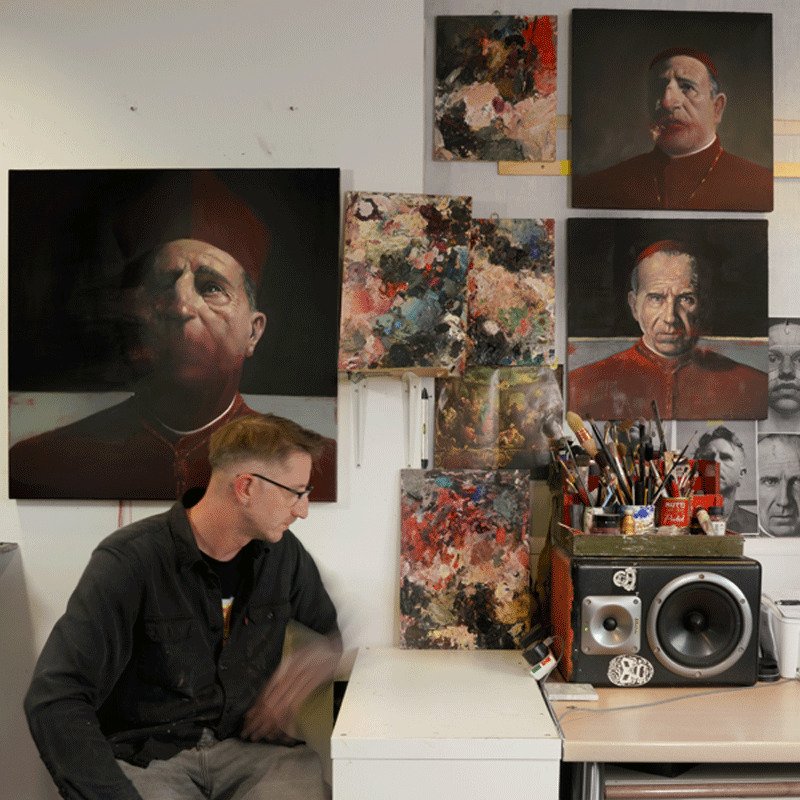
“You’ve got those few hours before the world starts to wake up and people start bothering you with pointless nonsense. I can’t wait to get out of bed and get to the studio in the morning, there’s few places I’d rather be…”
Death, work, love & Life…. Wright chose his authentic meaning over the worldly opportunities that he was earning and deserved and that has consequences of course.
“I’ve “bankrupted” myself several times to get on a path to where I want to be.”
He uses ‘bankrupted’ as a metaphor for the opportunities he earned and were honored for, but walked away from to stay aligned with his passion, desire, joy and what inspires the authentic enthusiasm to start at 5 am each day… It confronts what really prevents some of us from resolving our individual existential crisis… What are you willing to do?
Are we so conditioned to cut off, numb, hide (turn a blind eye) to the ugly, scary parts that don’t make us feel good and with them perhaps we loose the full capacity to feel the passion, joy and love…
The reflections that Wright offers us are without words or intentions. If he can invoke these feelings, who are we to argue?
Thomas’ work is as diverse as his life. At this show, much as he portrays life-saving operations close up, in between are series where perhaps he’s releasing pain and the demons…
A series of morphed, what could be clergy in red hat, including a painting of a cardinal & surgeon in ‘Confession.’ “Yes, cardinal-esque. and the clergyman is the one on his knees.” Perhaps his quest of life, death and belief is questioned in the face of religious experience, “Art is my divine guidance.”
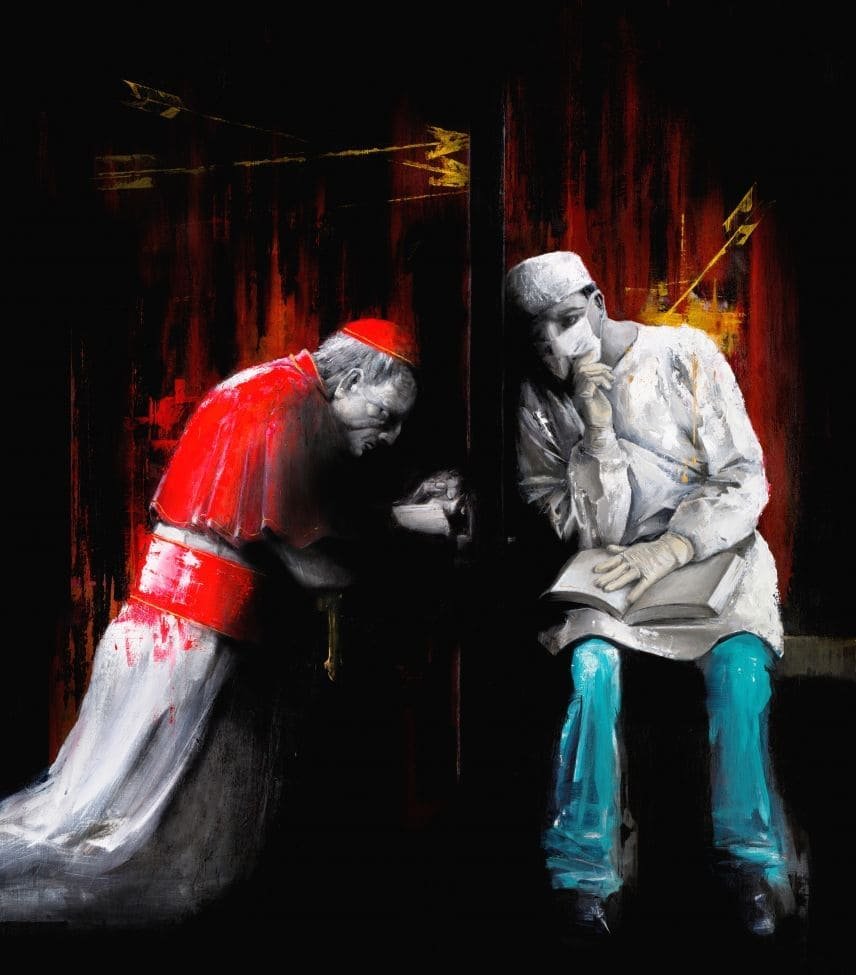
“There’s quite a few of them (paintings) that represent different points, which I would consider breakthroughs.”
‘Peter’ an early work, a decapitated horse’s head, pierced with arrows, being carried with care in a man’s arms. “One of the counsellors who set me on the right path of ditching my poisonous habits and is largely responsible for helping me leave that side of life behind.
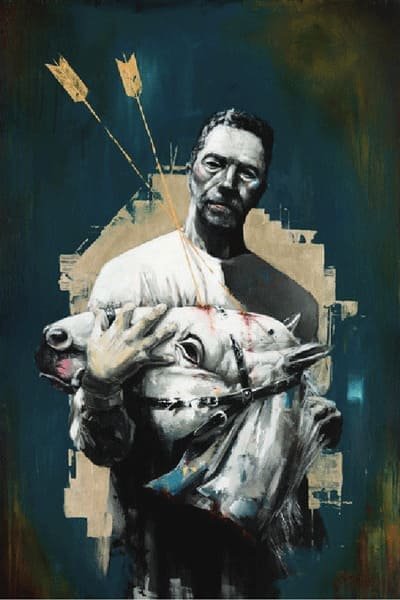
That one is a representation of conquering.
Do you think you have to be that close to death to appreciate life? That this can keep you alive.
“I found this joy for life. And that’s where it comes from. I’m just so happy not to be where I was. But to have the joy for it.”
There is a series of Anatomical Studies, portraits, a progression of the face that one shows the world and the on the other hand of how dislocated our thoughts are. They look underneath the facade and reveal perhaps the distraction and abstraction of thought.

“If you start to paint without thinking about it, what’s going on in the back of your head starts to come through. So you’re channeling something through your hands and this is perhaps your mask of truth. It’s just allowing the subconscious to flow. It’s more the abstraction of what’s going on behind the face.
‘Man is least himself when he talks in his own person. Give him a mask, and he’ll tell you the truth.’ – Oscar Wilde.’
I think perhaps because I’m quite a gentle, monotone sort of bloke, inside I feel like I’ve got a completely different character to what I’m projecting to the world that comes out through the art. If you want to know someone’s true character, then perhaps you look at their art or their writing or whatever they create when they’re on their own.’”
Paint deliberateness: Between the colours and the determination with which he strikes the paint. There’s is some very kind of fearless and strong mark-making. Building up and tearing down an image until he realizes it could be better. It underscores the intention.
“If it’s going in a certain direction I’ll just allow it to continue, often I’ll get to a point where I don’t like it, which can almost be two or three days which is a bit of a problem, but then I might like one section of it so I’ll scrape everything off and maybe just leave that one section.
Once you scrape all the paint off it leaves remnants of the previous layer, you get all these scratchy marks and various other interesting sections that are blended. I really enjoy what comes off when you scrape it off. They very rarely start or finish the way the first layers that go down. “
His years as a DJ – finding out how sounds and lights can control how a crowd feels and moves, has given him the tools to understand and control of his narrative. We had met him in the brink of a new direction, his portraits are a homage to the great baroque painters and themes of angel vs devil as the world turns from one politic to almost the exact opposite. I believe he is tuning in to the generational collective unconscious of today.
“Sometimes there’s an image in your mind that won’t give you a moments peace. What else was I to do but paint it?”
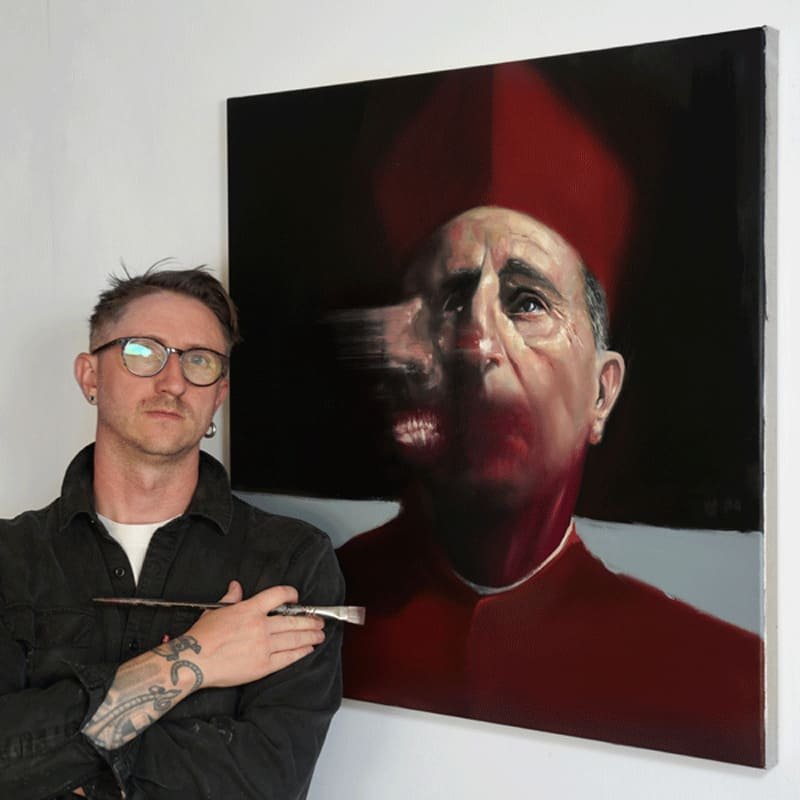
Thomas’ life is more of a philosophy with a brush in hand. As you peer into the paintings, you realize they are of self. They are all echoes of his mind.
“It basically revolves around these three ideas of my own journey of self-destruction and rebirth, which is more of an autobiographical angle to it, and a chance, perhaps, for me to project these demons we spoke about earlier, but also the surgical research and my passion for Baroque religious painting. All these ideas condensed into one kind of cocktail shaker, if you like, and then shaken up, spilled out over the canvas as various images will come out and formulate in my mind based around these ideas. Not necessarily making sense, I see them more as a conversation than a statement, It’s the audience’s job to interpret it.”
“It’s about finding peace. Simple. Isn’t that what we all want?
If you’re matching your inner vibrations to what you’re seeing on the canvas. And again, it’s about finding… putting yourself at peace with what you’ve made because that can bring you some sort of comfort because you’ve matched those inner vibes.
And all of a sudden, you’re harmonious with your surroundings.”
Thomas D Wright had the honor to present his surgical photography at the Royal Society of Medicine for the annual dinner for the London School of Cardiothoracic Surgeon Brings New Procedures to UHS Cardiothoracic.
Enjoyed this feature on Thomas D Wright? For reviews, interviews and features from London’s arts scene, follow EyeOnLondon for intelligent coverage that keeps you in the know.
Thomas D Wright
Books: Lungs Off, Volume I & II — photographs taken inside the St Bartholomew’s Hospital theatres.
Follow us on:
Subscribe to our YouTube channel for the latest videos and updates!
We value your thoughts! Share your feedback and help us make EyeOnLondon even better!

